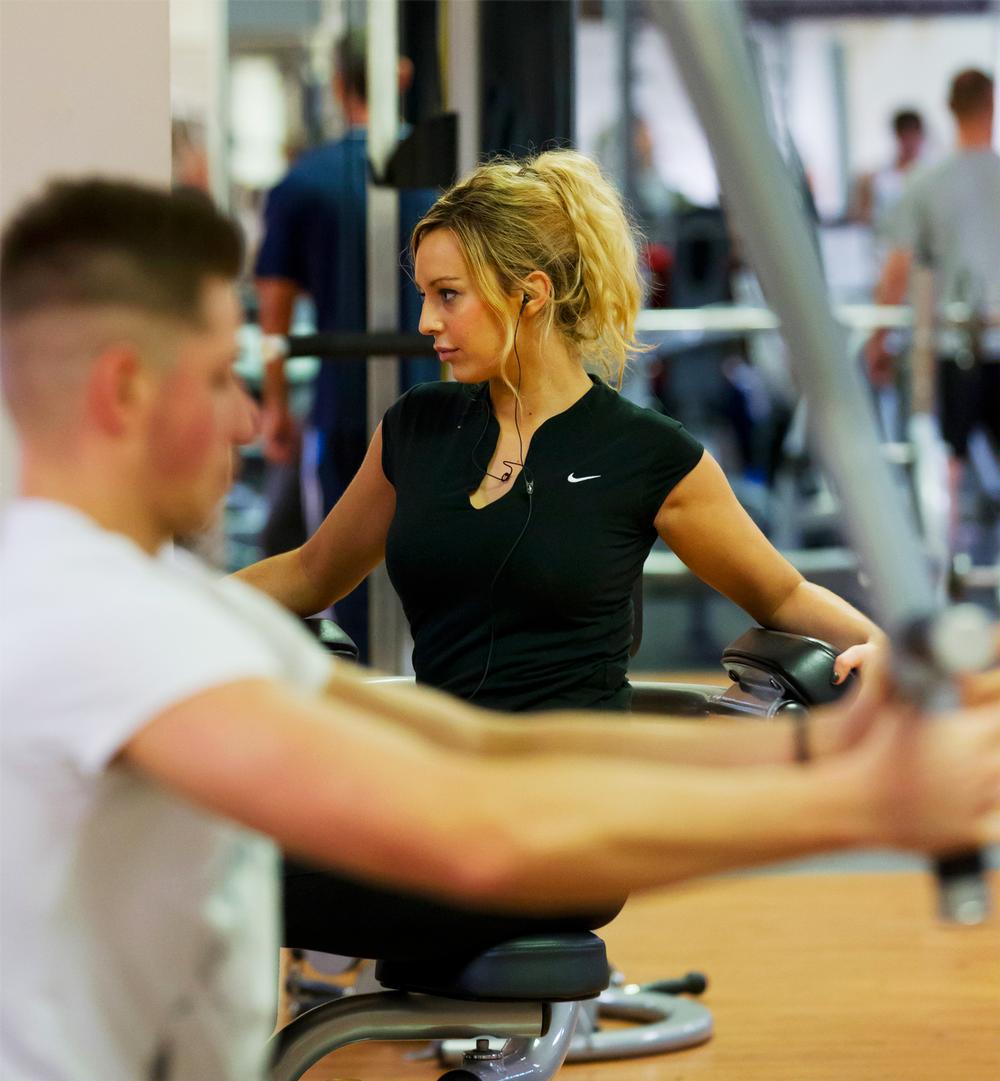Let's be clear about the value of great customer service. As Sam Walton, founder of Walmart, once said: “There is only one boss. The customer. And she can fire everybody in the company from the chairman on down, simply by spending her money somewhere else.”
If you’re in the camp that still regards customer service as a cost, not an investment, then it's probably better to flick on to the next article.
But if you appreciate the importance of creating a customer-centric business – where you encourage feedback to understand customers’ needs, and then strive to meet those needs on a daily basis – then read on.
The value of feedback
Creating a steady flow of feedback allows you as a fitness operator to engage with customers and listen to them in a structured, methodical way.
It allows you to track and measure customer satisfaction, and helps you quickly respond to customer issues.
Without a steady stream of actionable customer feedback, we don’t know what to change to make our industry and our businesses better.
Sharing feedback with your team, to keep them informed, means they can take ownership of customer satisfaction and retention. And publicly sharing feedback also pays dividends: leveraging social media can help happy customers to spread the word about your brand.
One million members
So what feedback are members giving to their health clubs, and what can operators learn from this?
At the IHRSA International Convention & Trade Show in March, Listen360 presented the findings of its analysis of feedback from over one million members (a total of 1.6 million comments) – the largest such study ever carried out in the fitness industry.
The one million individuals were members of over 2,000 different health clubs across 10 countries. An ongoing study, the data presented at IHRSA was collected between January 2014 and March 2015.
The members surveyed were simply asked the Net Promoter Score question: “On a score of 0 to 10, how likely are you to recommend your health club to a friend or business associate?” – with a score of 0 meaning they were unlikely to do so, and 10 meaning ‘very likely’. The members could then be categorised as a detractor, passive or promoter based on their score (see Figure 1, p39). Clubs were then given their NPS score: the balance remaining after subtracting detractors from promoters – which could of course be a negative number.
The Net Promoter Score metric was designed to predict the likelihood of business growth. Experience validates this. In multi-location businesses, the locations registering the top 10 per cent of NPS scores have the highest growth; while the bottom 10 per cent experience little or no growth.
For the big-box clubs Listen360 analysed, the membership breakdown averaged 66 per cent promoters, 23 per cent passives and 11 per cent detractors, resulting in an average member experience NPS of 55 per cent.
With class-based businesses and studios factored in, the numbers are more like 70 per cent promoters, 20 per cent passives and 10 per cent detractors. Significantly higher than industry benchmarks published by IHRSA and other groups, this number reflects a community of fitness businesses with a strong commitment to delivering an exceptional member experience. They have not only implemented a system to measure member loyalty, but actively use the insights provided to direct their continuous improvement efforts.
Data becomes insight
So how have they done this? The big question often asked about NPS is how to take this research to a level that will allow for operational insight. Whether they’re detractors, passives or promoters, which areas of your offering are your members talking about, what are they happy with, where do they wish to see improvements?
This information needs to be uncovered as objectively as possible. With this in mind, Listen360 asks one follow-up question depending on the score given by the members.
Detractors – anyone who scored their likelihood of recommending their health club as 0–6 – are asked: “How did we disappoint you and what can we do to make it right?”
Passives, who scored their club 7–8, are asked: “What could we do to improve?” And promoters, who are those scoring from 9–10, are asked: “What do you like about our services?”
The text from these member responses is then analysed, with the system identifying the words most regularly mentioned by members. This offers an insight into what clubs are doing well, what isn’t so good, and what members want.
What do members talk about?
The top five terms referenced by both promoters and detractors in our million-member study can be seen in Figure 2. Aside from price, we can see it’s the same key words being talked about on both sides of the fence – cleanliness, availability of equipment, variety of classes. Your happy customers aren’t so hung up on price, because they believe they’re getting value for their money. For your detractors – your unhappy members – when they aren’t satisfied with what you’re offering, all of a sudden price becomes an issue.
Promoters are more concerned about location than price – if they like what you’re giving them, and it’s conveniently located, then they’ll deal with the price.
The great news is that there are many more positives being talked about by members than negatives, as evidenced by the NPS figures noted above.
Operators can take these objective measures and use them as the basis on which to take informed action, safe in the knowledge that these actions will improve the customer experience.
Theory into practice
Xercise4Less began using the Listen360 programme in January 2014. Since then, the operator has received over 40,000 member feedback comments.
At the outset of the initiative, Xercise4Less’ NPS score was sitting at 31 per cent. At this point, a decision was taken at boardroom level to set a KPI of responding to detractor feedback – with a phone call or a meeting – within 48 hours of the feedback being received; this KPI has since been reduced to 24 hours. Performance of this metric is monitored on management dashboards. The business has also introduced regular in-club ‘meet the manager’ evenings.
From a retention perspective, this approach to detractor feedback leads to a pre-emptive rather than a reactive cure: the club is given a clear and objective view of a member’s concerns and is able to connect with the member and make the situation better before he/she has reached the stage of cancellation.
The board of Xercise4Less then set about looking into the aspects of their health clubs, and the service provided by their staff, that their members were talking about the most.
One of the top five most mentioned terms by detractors of Xercise4Less during the first three months of feedback was “water fountains”. An audit of the numbers and positioning of water fountains was commissioned, and the evidence quickly showed that there was indeed work to be done to improve this provision. More fountains were fitted at a relatively low cost, the NPS score began to creep up, and the board began to feel they were on to something good.
Throughout the rest of the year, more actions were taken based solely on the analysis of the top words being mentioned in the member feedback. Xercise4Less CEO Jon Wright says: “Hearing what our customers think helps us stay true to our brand identity.”
Figure 3 shows the improvement of Xercise4Less’ NPS over the last year.
Harnessing positivity
The chain has also taken measures to use the positive feedback from members. One huge area of success has come from simply asking the members to share their positive opinions on either twitter or Facebook. This has resulted in over 4,000 testimonials about Xercise4Less being published by its members.
It should be noted that, throughout this study, just shy of 20 per cent of a club’s promoters will be happy to share their feedback on social media if asked to do so. This figure will vary widely depending on your overall NPS score, how easy you make it for promoters to share feedback via social channels, and whether you create a special offer for them to share with friends. On average 9–10 per cent will share, but for brands with an attractive offer and lots of promoters, it can exceed 20 per cent.
Feedback into action
Remember, the key responsibility when gaining member feedback is that you use this to take action – whether that’s to improve facilities, turn detractors into promoters, or to energise promoters to ‘sell’ your club for you. Aside from a little kudos and bragging rights, very little can be gained operationally from the score alone. We need to constantly measure the feedback, analyse it and then improve our services.
The evidence from over one million members is clear. Profitable, sustainable organic growth occurs most often when customers and employees enjoy their business relationship with a company and willingly sing its praises to neighbours, friends and colleagues.



























































